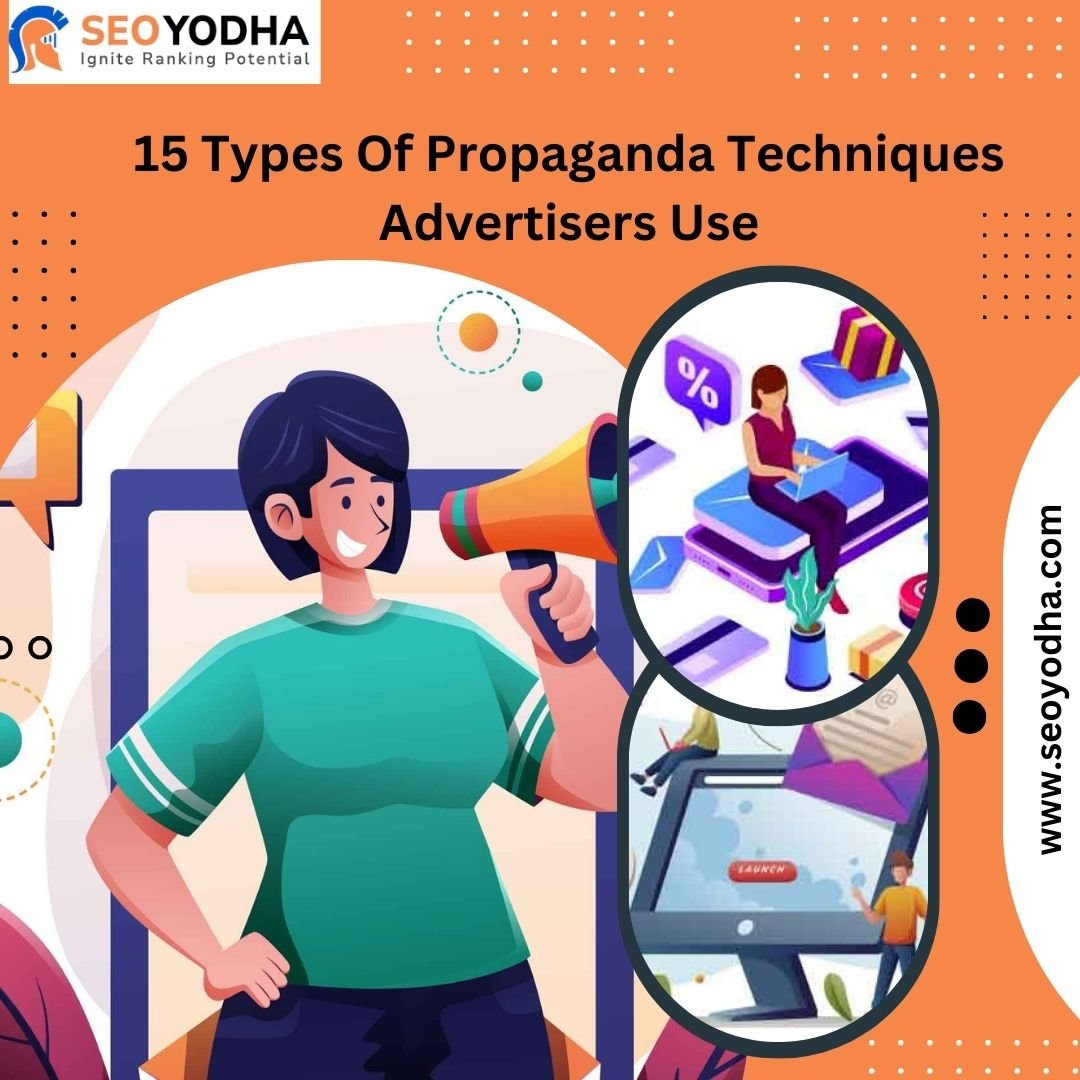Table of Contents:
- Introduction
- The Art of Persuasion
- Bandwagon
- Testimonials
- Fear
- Name-Calling
- Loaded Words
- Glittering Generalities
- Plain Folks
- Transfer
- Repetition
- Emotional Appeal
- Logical Fallacies
- Card Stacking
- Slogans and Jingles
- Nostalgia
- Conclusion
Introduction
Advertising is a powerful tool that goes beyond promoting products or services. It’s a form of persuasion, and at the heart of advertising lies the art of propaganda. Advertisers use a variety of techniques to influence our thoughts and actions, often without us even realizing it. In this comprehensive guide, we’ll explore 15 types of propaganda techniques that advertisers employ to capture our attention, shape our perceptions, and ultimately convince us to buy their products or support their causes.
The Art of Persuasion
Before diving into the specific propaganda techniques, let’s understand the essence of persuasion. Persuasion is the process of influencing someone’s beliefs, attitudes, or behaviors. In advertising, persuasion is key to convincing consumers to take the desired action, whether it’s making a purchase, signing up for a service, or supporting a cause. To achieve this, advertisers rely on an array of propaganda techniques, each designed to tap into different aspects of human psychology.
1. Bandwagon
The Bandwagon technique plays on the human desire to belong and not be left out. Advertisers use this approach to convince us that everyone is using a particular product or supporting a particular cause, making us want to join the crowd.
2. Testimonials
Testimonials are a potent propaganda technique. They involve using endorsements from satisfied customers, celebrities, or experts to build trust and credibility. We’re more likely to trust a product if someone we admire or respect endorses it.
3. Fear
Fear is a strong motivator, and advertisers know it. By highlighting the potential negative consequences of not using their product, they can push us to take action. Think about anti-smoking campaigns that show the health effects of tobacco use.
4. Name-Calling
Name-calling is a technique where advertisers use derogatory language to tarnish the reputation of a competitor or a product. By creating a negative image, they aim to steer consumers away from the competition.
5. Loaded Words
Loaded words are those with strong emotional connotations. Advertisers use them to evoke specific feelings or reactions. For instance, describing a car as “powerful” or “luxurious” instantly creates a certain perception in our minds.
6. Glittering Generalities
Glittering generalities are the opposite of name-calling. Advertisers use vague, emotionally appealing words and phrases to make their products sound great without providing concrete evidence. Terms like “the best,” “high-quality,” and “innovative” fall into this category.
7. Plain Folks
The Plain Folks technique presents the idea that a product or message is associated with everyday, ordinary people. Advertisers aim to create a sense of familiarity and relatability.
8. Transfer
The Transfer technique involves associating a product or message with something that already has a positive image. This positive association then transfers to the product. For example, showing a car driving through a beautiful landscape can evoke a sense of freedom and adventure.
9. Repetition
Repetition is a simple but effective propaganda technique. The more we hear or see something, the more we tend to believe it. Advertisers use this by repeating their message, slogan, or jingle to make it stick in our minds.
10. Emotional Appeal
Emotions are a powerful tool for persuasion. Advertisers often create ads that play on our feelings, whether it’s joy, sadness, anger, or nostalgia. These emotional connections can drive our decision-making.
11. Logical Fallacies
Logical fallacies are errors in reasoning that advertisers sometimes exploit. These include using false analogies, cherry-picking data, and making sweeping generalizations. By manipulating our sense of logic, they attempt to persuade us.
12. Card Stacking
Card stacking is a technique that involves presenting information in a way that supports the advertiser’s perspective while downplaying or omitting contrary information. It’s a form of one-sided argumentation that can manipulate our perception of the truth.
13. Slogans and Jingles
Slogans and jingles are short, catchy phrases or tunes that advertisers use to create brand recognition and stick in our minds. For example, think of Nike’s “Just Do It” or the McDonald’s “I’m Lovin’ It” jingle.
14. Nostalgia
Nostalgia is a potent emotional trigger that advertisers leverage. By evoking memories of the past, they can make us feel a sense of comfort and longing, which is often associated with their product or message.
Certainly, here are some frequently asked questions (FAQs) about propaganda techniques that advertisers use:
1. What are propaganda techniques in advertising?
Propaganda techniques in advertising are persuasive strategies employed by advertisers to influence consumer behavior, perceptions, and decisions. These techniques use psychological and emotional appeals to promote products, ideas, or causes.
2. How do propaganda techniques work in advertising?
Propaganda techniques work by tapping into human psychology and emotions. They aim to create specific associations, emotions, or responses in consumers. By using techniques such as emotional appeal, fear, and testimonials, advertisers can influence people’s thoughts and actions.
3. Why do advertisers use propaganda techniques?
Advertisers use propaganda techniques to stand out in a competitive market, create emotional connections with consumers, and drive desired actions, such as purchasing a product, supporting a cause, or changing one’s beliefs. These techniques help build brand recognition and loyalty.
4. Can propaganda techniques be manipulative?
Yes, propaganda techniques can be manipulative as they often employ psychological triggers to influence individuals. While not all manipulation is inherently negative, it’s essential for consumers to be aware of these techniques and critically evaluate the messages they encounter in advertising.
5. What are some common propaganda techniques in advertising?
Common propaganda techniques in advertising include bandwagon, testimonials, fear, name-calling, loaded words, glittering generalities, plain folks, transfer, repetition, emotional appeal, logical fallacies, card stacking, slogans, jingles, and nostalgia.
6. How can consumers recognize and resist propaganda techniques in advertising?
Consumers can recognize and resist propaganda techniques by becoming informed about the various tactics, questioning the claims and emotional appeals made in advertisements, and being critical thinkers. Education and media literacy can help individuals become more discerning consumers.
7. Are there any regulations on the use of propaganda techniques in advertising?
Advertising regulations vary by country and region. While many countries have guidelines and codes of conduct for advertising practices, the enforcement of these regulations may differ. Some regulations aim to ensure that advertisements are not deceptive, harmful, or unethical.
8. Do propaganda techniques only apply to commercial advertising?
No, propaganda techniques are not limited to commercial advertising. They are also used in political campaigns, advocacy, and public relations efforts to influence public opinion, promote social causes, and shape political discourse.
9. Can propaganda techniques be used for positive purposes?
Yes, propaganda techniques can be used for positive purposes, such as promoting public health campaigns, encouraging charitable donations, or raising awareness about social issues. The ethical use of these techniques depends on the intent and the transparency of the message.
10. How can individuals protect themselves from falling prey to manipulative advertising tactics?
To protect themselves from manipulative advertising tactics, individuals can enhance their media literacy, be critical of emotional appeals and exaggerated claims, seek diverse sources of information, and research products or issues independently. Being an informed and thoughtful consumer is key to making wise choices in a world saturated with persuasive messages.
Conclusion
In the world of advertising, persuasion is the name of the game. Advertisers utilize various propaganda techniques to convince us to take action, whether it’s making a purchase, supporting a cause, or changing our beliefs. By understanding these techniques, consumers can become more critical and discerning when evaluating advertisements. The next time you come across an ad, take a moment to dissect it, and you’ll likely see some of these techniques at work. Advertisers may be masters of persuasion, but with knowledge and awareness, you can make more informed decisions about the products and messages you encounter in the world of advertising.






